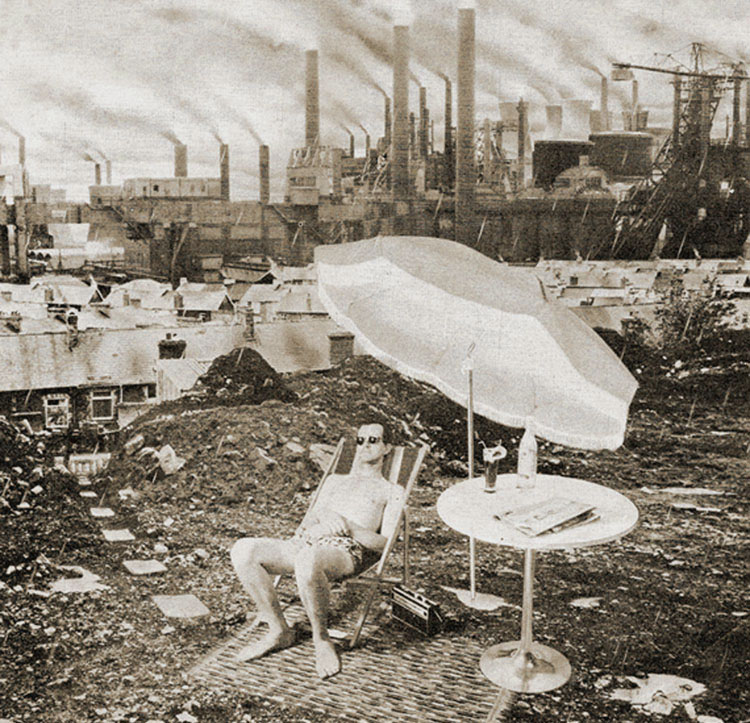Table of Contents
Overview:
- GLOBAL WARMING
- Of all our environmental debts the production of carbon dioxide through automobile exhaust and industrial emissions looms as our presiding usurer. While real concern for climate change is finally awakening in the general public, few truly understand how relatively small increases in atmospheric or oceanic temperatures can produce large scale effects. The underlying principle that amplifies all that global warming means is the subtle and far-reaching interconnectedness of all life systems on this planet. Understanding this is critical to understanding climate change. MORE.
Related Articles:
- BIG MELT MEETS BIG EMPTY: RETHINKING THE IMPICATIONS OF CLIMATE CHANGE AND PEAK OIL
- This excellent article by Richard Heinberg provides a comprehensive overview of the relationship of climate change to peak oil and how various proposed plans to deal with one effect the other.
- CO2 LEVELS IN ATMOSPHERE RISING AT DRAMATICALLY FASTER RATE
- Levels of carbon dioxide in the atmosphere rose at a record-shattering pace last year. A new United Nations report shows a surge that surprised scientists and spurred fears of an accelerated warming of the planet in decades to come.
- GEOENGINEERING THE CLIMATE: WEIGHING THE RISKS
- Is it possible to counteract global warming through the intentional modification of the climate? If so, what do we risk?
- THE TWENTY-NINTH DAY
- Adapting to Climate Change. Mud City Press reviews the Bush administration's Climate Action Report of 2002.
- CLIMATE CHANGE AND PEAK OIL: Two Facets of the Same Problem–Overshoot
- Mark Robinowitz: "Peak Oil and global warming are two ways of looking at overconsumption."
- THE PENTAGON'S 2003 CLIMATE REPORT
- An abrupt climate change scenario and its implications for United States National Security: Imagining the Unthinkable.
- PETROLEUM WARS IN AN AGE OF CLIMATE CHANGE, Mud City Press Blog, 2/19/2007.
- CONSEQUENCES OF EXCESS NITROGEN IN ATMOSPHERE
- Carbon dioxide gets the ink when it comes to climate change, but nitrogen concentrations in the atmosphere are critical also. What are the environmental and social implications of disturbing the global nitrogen balance?
- FIGHTING CLIMATE CHANGE
- Climate change could be stopped in its tracks using existing technology, but only if politicians do more to force businesses and individuals to take action.
- LONG CONCENSUS ON CLIMATE CHANGE
- Scientific research on carbon dioxide and climate dates to the 19th century, when Irish scientist John Tyndall established that carbon dioxide is a greenhouse gas, meaning that it traps heat and keeps it from escaping to outer space. Naomi Oreskes' report provides a brief history of the study of climate change.
- ARCTIC CLIMATE IMPACT ASSESSMENT REPORT
- Read the entire Arctic Climate Impact Assessment Report online.
- INTERGOVERNMENTAL PANEL ON CLIMATE CHANGE
- This is a link to the IPCC website.
- IPCC CLIMATE CHANGE MITIGATION: AGRICULTURE
- Read IPCC's report on climate change mitigation through agriculture as PDF.
- IPCC CLIMATE CHANGE MITIGATION: FORESTRY
- Read IPCC's report on climate change mitigation through forestry as PDF.
Many of the essays, stories, and reviews at Mud City Press are formated as ADOBE PDF files. If you don't have ADOBE's Acrobat Reader on your computer, you may download their free software at the ADOBE website.

